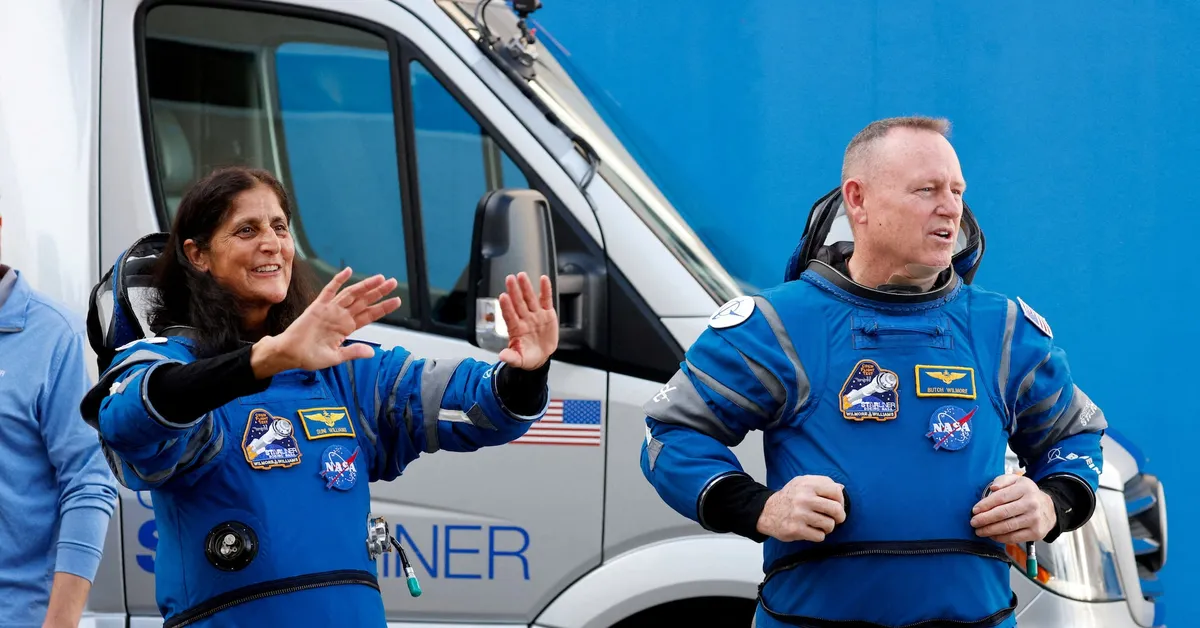
On March 14, NASA and SpaceX announced their plans to launch a long-awaited crewed mission aimed at bringing home U.S. astronauts Butch Wilmore and Suni Williams, who have been stationed on the International Space Station (ISS) for an extended period of nine months. The launch, originally scheduled for Wednesday, faced delays due to last-minute complications with the rocket's ground systems.
NASA reported on Thursday that SpaceX successfully resolved the issue by flushing a suspected pocket of air from a hydraulic clamp arm. Following this resolution, the weather forecast improved to 95% favorable conditions for the anticipated launch on Friday at 7:03 p.m. ET (2330 GMT). The Crew-10 mission is set to reach the ISS by Saturday night, marking a significant milestone in U.S. space exploration.
The crew's return has not been without challenges. Problems with the Starliner propulsion system during a previous flight led NASA to extend the stay of Wilmore and Williams, as it was deemed too risky for them to return on that craft, which subsequently returned to Earth empty. Adding to the complexity of the situation, the mission has become entwined in political discourse, with President Donald Trump and SpaceX CEO Elon Musk suggesting, without evidence, that former President Joe Biden's administration delayed the astronauts' return for political reasons.
In response to the political allegations, Wilmore expressed confidence in NASA's decision to keep them on the ISS until Crew-10's arrival, emphasizing that the agency's focus is on safety and operational readiness. "We came prepared to stay long, even though we planned to stay short," Wilmore stated, highlighting the importance of contingency planning in human spaceflight.
NASA has stressed that maintaining minimum staffing levels on the ISS is crucial for its operations. As a result, Wilmore and Williams have adapted their mission activities to include scientific research and routine maintenance alongside their fellow astronauts. This adaptability is vital for the successful operation of the ISS and the continuity of its ongoing research projects.
The intervention from Trump and Musk for an expedited return of the astronauts has made this mission an unusual case in NASA’s typical launch preparation processes. Consequently, NASA decided to advance the Crew-10 mission from March 26, swapping out a delayed SpaceX capsule for one that was ready sooner. NASA's Commercial Crew Program manager Steve Stich noted that the rapid pace of SpaceX operations prompted necessary adjustments to the agency's flight safety verification processes.
NASA has faced several late-breaking safety concerns, including investigating a fuel leak from a recent SpaceX Falcon 9 launch and assessing the deterioration of coatings on some of the Dragon crew capsule's thrusters. NASA space operations chief Ken Bowersox remarked on the challenges of keeping pace with SpaceX, stating, "We're not quite as agile as they are, but we're working well together."
Once Crew-10 successfully launches and docks with the ISS, Wilmore, Williams, and two additional crew members—NASA astronaut Nick Hague and Russian cosmonaut Aleksandr Gorbunov—will prepare for their return to Earth. They will utilize a capsule that has been attached to the station since September as part of the previous Crew-9 mission. If all goes according to plan, Crew-10 will dock at the ISS at 11:30 p.m. ET Saturday (0330 GMT Sunday), followed by a traditional handover ceremony, allowing the Crew-9 astronauts to depart on March 19.
Stay tuned for more updates on this exciting chapter in space exploration as NASA and SpaceX continue to push the boundaries of human spaceflight.